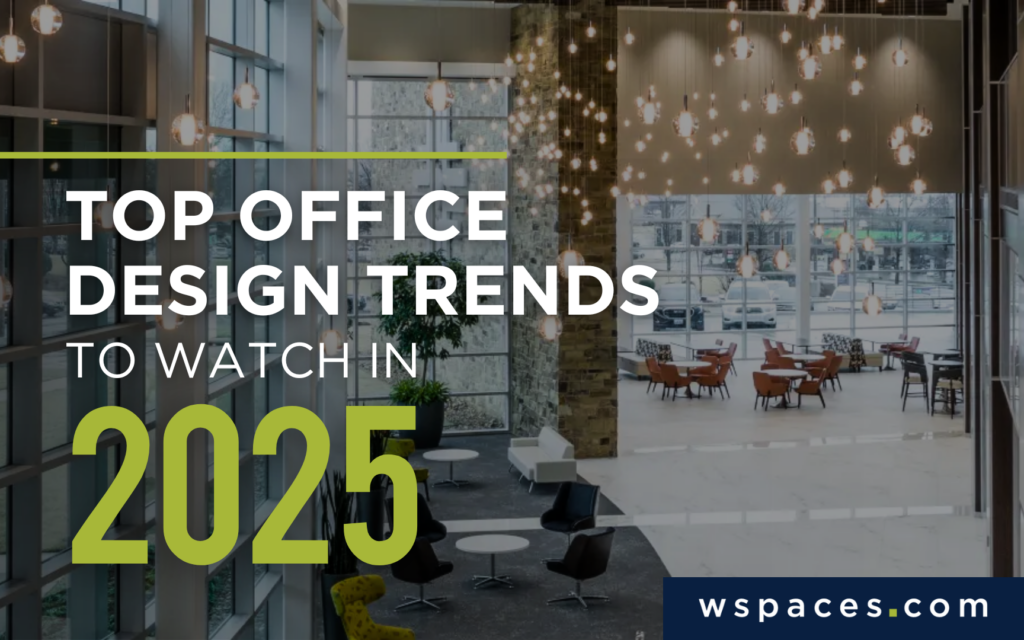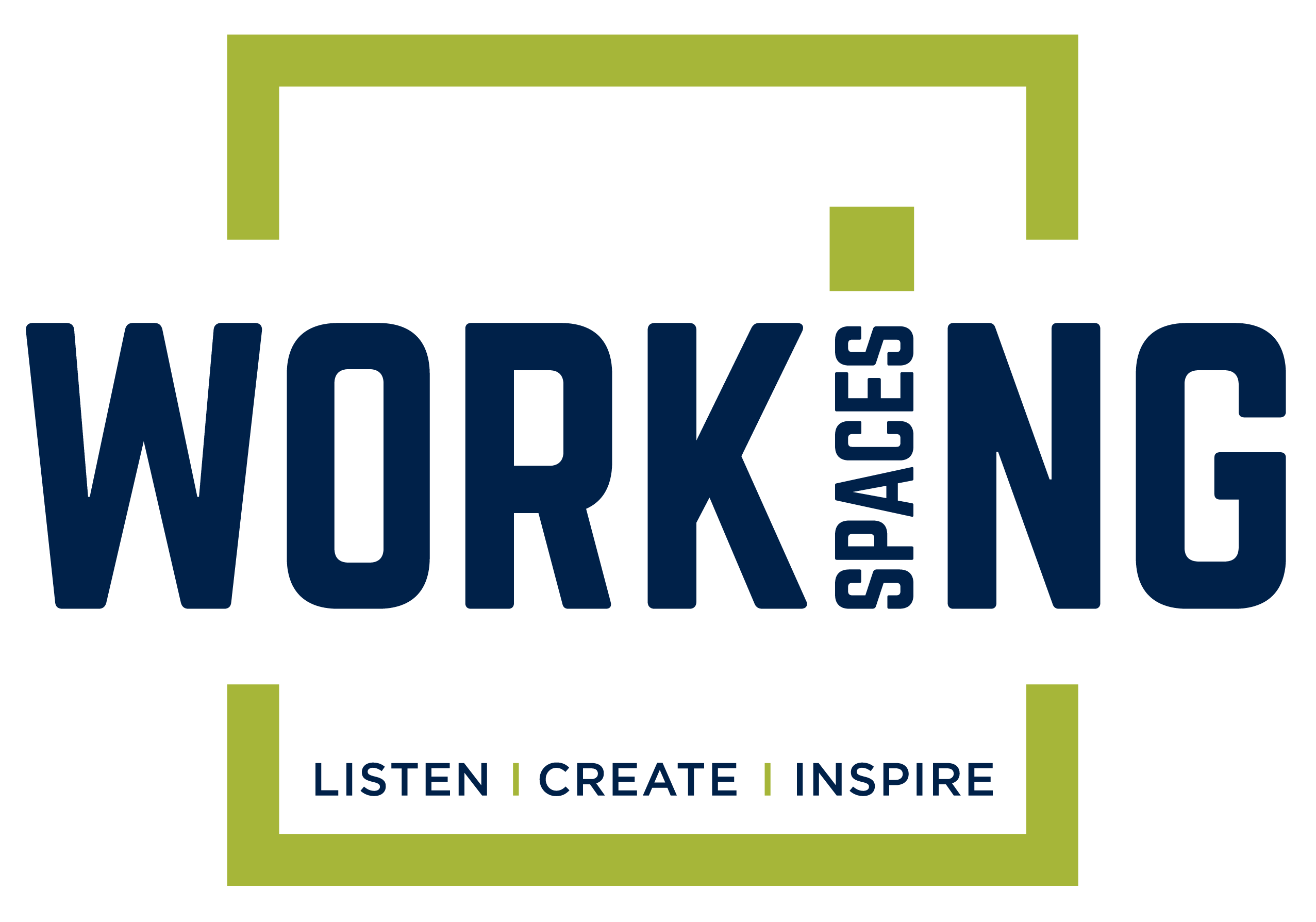
A new year is almost here and with it comes new trends in office design. Return to office mandates picked up speed in 2024 and all signs point to them increasing in 2025. That means the office needs to be enticing and inviting to employees, increasing their engagement with their work and enhancing the workplace culture, while meeting the ever-evolving needs of businesses.
Here are the top office design trends for 2025 that can meet the expectations of both workers and employers.
Sustainable Materials and Eco-Friendly Designs
Workers increasingly expect companies to go beyond meeting the bare minimums of environmental compliance to fully embrace environmental stewardship and sustainability as part of their corporate social responsibility.
Look for sustainable, eco-friendly office design to be a top trend in 2025. This can include:
- Utilizing natural, sustainable, reclaimed and/or recyclable materials in office construction and furnishings.
- Efficient smart technology, energy-saving appliances and lighting systems, and low-flow water-saving fixtures.
- Green walls and natural lighting to reduce energy consumption and naturally filter indoor air.
- Construction, maintenance, and production practices that reduce carbon emissions and eliminate waste.
Bringing Nature into the Office with Biophilic Design:
Similar to sustainable, eco-friendly design, biophilic design focuses on connecting people with nature by incorporating natural elements into the design and construction of the space. This can create a calming environment that enhances worker focus and reduces stress.
Design elements can include:
- Incorporating natural landscape features into the design.
- Using an earthy color palette with greens and blues.
- Following design shapes and forms that mimic the natural world, like circular furniture or asymmetrical lighting.
- Making nature part of the office design with water features, green walls, and plants.
Adaptive Workspaces That Fit All Work Styles
Open office layouts may foster employee conversations and visual transparency, but they can be noisy and lack privacy, hindering worker productivity instead. And they don’t fit all work styles, with open offices being the bane of quieter, introverted employees. In 2025, the open-office will become a more flexible and adaptive office, designed to help employees thrive in different work styles, roles, and situations—from group brainstorming and collaborative projects to solo work.
Look for designs that include:
- Designated quiet rooms or zones specifically for focused work, quiet breaks, or meditation.
- “Cozy corners” that break up the wide-open office with a living room feel of warm lighting and comfortable seating for a more casual and intimate work environment.
- Mixed-use spaces that allow employees to choose and even customize the environment that best suits their work needs.
Hybrid Workspaces for Flexible Work Schedules
In the battle of remote work versus return to office, more companies are compromising with their employees through hybrid work schedules. In 2025, anticipate even more offices to reconfigure as hybrid workplaces that support a mix of employee work arrangements—workers with a hybrid schedule split between the office and working remotely, those working entirely in-office, and fully remote workers.
Hybrid workspace design should create a seamless experience for all these employees, regardless of physical location, while fostering collaboration, productivity, and worker satisfaction. Hybrid workplace features and elements include:
- Hot-desking where employees can reserve desks as needed, optimizing space usage.
- Collaboration hubs for brainstorming and teamwork, equipped with advanced communication tools.
- Privacy pods for focused work or video calls, easily providing personal space in an open office layout.
- Integrated technology and connectivity in every work area, ensuring every employee can join any meeting or collaboration session, no matter where they are working from.
The Rise of Modular Office Design
These flexible, adaptive, and hybrid workspaces can only be possible with modular office design elements and furnishings that can easily be reconfigured, relocated, or repurposed as needed. Modular design will make creating (and constantly re-creating) flexible office space sustainable and cost-effective for 2025 and beyond.
Modular office design accomplishes this by using prefabricated and customizable components, including:
- Modular furniture and pods, including adjustable desks, privacy pods and “phone booth” workstations, collapsible and stackable tables and chairs, and all-in-one shelving units.
- Lightweight, movable walls and partitions that can be shifted to create private offices or open workspaces.
- Raised flooring systems and/or open ceilings that allow easy access to wiring and utilities, making office layouts more adaptable.
- Pre-wired plug-and-play systems that simplify powering workstations and equipment and provide seamless connectivity.
Technology Integration and Smart Office Solutions
Along with modular fixtures and furnishings, flexible workspaces can’t exist without fully integrated, smart-office technology. No longer merely the tools employees use to work more efficiently, in 2025 technologies like video conferencing systems, cloud-based software, and collaborative digital platforms that support all workers equally, will be top design considerations, driving office layouts and construction needs.
Top technology and smart office solutions include:
- Smart devices, systems and IoT solutions that detect, monitor, and manage energy usage, air quality, occupancy tracking, and hot-desking.
- Integrated technology tools like video conferencing systems, shared digital workspaces, interactive white boards, and cloud-based applications for effective communication and collaboration between in-office and remote workers.
- Expanded digital infrastructure that can better support and secure remote work, including high-speed internet, cybersecurity measures, cloud systems, and virtual private networks.
Personalized and Customizable Workspaces
If you want an engaged and productive workforce, your employees need to feel valued, included, and a sense of ownership of their workspace and the work they do in it. Allowing employee personalization and customization of the office is a great way to accomplish this.
In 2025, expect to see more personalized office designs through:
- Crowdsourced design that gives employees a say in the look, feel, and usage of shared work areas.
- Including employees in designing the art that will be part of their space and allowing them to personalize their workspaces to make it feel like it’s “theirs.”
- Using art and design features that reflect the type of work different employee teams do (e.g. Marketing, Finance, etc.) and that visualizes the company culture, values, and brand identity.
Wellness-Centered Workspaces
In this post-pandemic world, employees expect their workplace to be safe and healthy and that their employer cares about both their physical and mental well-being. As soon as employees walk into their office, they should feel that they are in a safe, supportive, and healthy environment.
In 2025, make your office a wellness-centered workplace through:
- Minimalist design with clean lines and uncluttered surfaces for a sense of order and cleanliness, helping employees feel less stressed, more focused, and safe.
- Ergonomic designs and furniture that support the body’s natural posture and standing desks encouraging movement and reducing physical pressure.
- Employee-centric spaces that provide comfortable seating, like plush sofas, armchairs, and even bean bag chairs, allowing employees to work in a more relaxed setting.
- Wellness additions and facilities like on-site gyms, meditation rooms, and outdoor spaces that show employees their well-being (physical and mental) is a priority.
Office Design for Enhanced Productivity, Creativity, and Business Success
Ultimately, all these office design trends are about achieving optimal business success by prioritizing sustainable, flexible and adaptable workplaces and the satisfaction and well-being of the employees who work in them. An engaged, happy employee is a more creative, productive employee.
As the trend setters in office design, Working Spaces understands how these newest innovations can fulfill both employee expectations and employer needs. Contact us today to see how we can bring the top office design trends of 2025 to your workplace!
